Blog
Tattoo Removal Alternatives: Is There a Better Option Than Laser
Regretting an old tattoo and wondering if there’s a better way than laser to remove it? At PinkTatPier, located in London’s vibrant Shoreditch and Camden districts, we guide clients through safe, effective tattoo removal options tailored to their needs. While laser removal (e.g., PicoSure Pro, Picoway) is the gold standard in 2025, achieving 70-95% clearance, alternatives like surgical excision, saline removal, dermabrasion, and chemical peels offer unique benefits for specific cases (Source: British Journal of Dermatology, 2025). Each method varies in cost, pain, and results, making the choice personal. With over 15 years of expertise and a 2024 London Tattoo Award, PinkTatPier helps Londoners choose wisely. This 3000-word guide explores tattoo removal alternatives, compares them to laser, shares London client stories, debunks myths, and answers your questions. Ready to erase your ink in London’s thriving tattoo scene? Dive in with PinkTatPier’s expert advice! Book at pinktatpier.com or follow @PinkTatPier on Instagram.
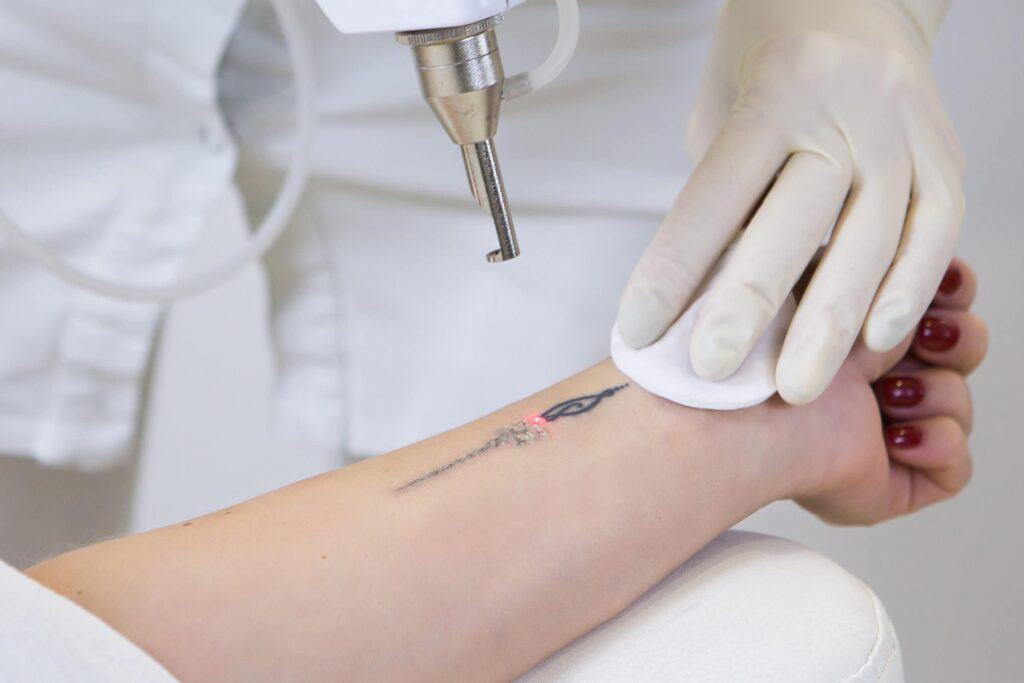
Tattoo Removal Alternatives
Why Consider Tattoo Removal Alternatives?
Laser tattoo removal uses light pulses to shatter ink, cleared by your immune system over 6-15 sessions (£50-£300 per session in London). It’s effective but costly (£300-£3,600 total), time-consuming (6-18 months), and less efficient for colours like green or yellow (Source: FDA, 2025). Alternatives may suit you if:
- Budget Constraints: Laser packages can exceed £2,000; methods like saline are cheaper (£300-£900).
- Small Tattoos: Surgical excision removes tiny tattoos in one session.
- Skin Sensitivity: Non-laser methods avoid light-based risks like hyperpigmentation.
- Partial Fading: Some seek fading for cover-ups, not full removal.
PinkTatPier Client Story: Maya, a London barista, chose saline removal at our Shoreditch studio for a small wrist tattoo. “Laser was too pricey for me,” she said. “Saline faded it in 5 sessions for a new design—perfect for my coffee shop shifts!”
Expert Quote: “Alternatives offer flexibility for unique needs,” says Isla, PinkTatPier’s lead artist with 18 years of experience. “Our London clients trust us to find the best removal path.”
Overview of Tattoo Removal Alternatives
Here’s a breakdown of non-laser methods compared to laser, focusing on process, effectiveness, and suitability:
| Method | Process | Effectiveness | Scarring Risk | Cost (UK, 2025) | Sessions | Best For |
|---|---|---|---|---|---|---|
| Laser (Pico/Q-Switched) | Light pulses shatter ink. | 70-95% clearance; best for black ink. | Low (1-5%) | £50-£300/session (£300-£3,600 total) | 6-15 | Most tattoos, all skin types |
| Surgical Excision | Cuts out tattooed skin; stitches close wound. | 100% removal for small tattoos. | High (10-50%) | £200-£1,000 | 1 | Small tattoos (<5 cm) |
| Saline Removal | Saline injected to lift ink via scabbing. | 50-80% fading; best for amateur ink. | Low (<5%) | £50-£150/session (£300-£900) | 3-8 | Cosmetic/amateur tattoos |
| Dermabrasion | Sands skin to remove ink layers. | 50-70% fading; superficial ink. | High (20-50%) | £150-£500/session | 1-3 | Light, surface tattoos |
| Chemical Peels/TCA | Acids exfoliate ink from skin. | 40-60% fading; superficial ink. | Medium (10-20%) | £100-£300/session | 4-6 | Faded, light tattoos |
| Cryotherapy | Freezes ink with liquid nitrogen. | 50-70% fading; inconsistent. | Medium (10-15%) | £100-£250/session | 2-4 | Small, dark tattoos |
(Source: British Journal of Dermatology, 2025; PubMed, 2022)
1. Surgical Excision: Cutting It Out
- Process: A dermatologist numbs the area, excises the tattooed skin with a scalpel, and stitches the wound. Skin grafts may be needed for larger tattoos.
- Pros: Complete removal in one session for small tattoos (<5 cm); no ink residue.
- Cons: Visible scarring (higher in darker skin), invasive, infection risk (5-10%), not for large tattoos due to disfigurement.
- Cost & Results: £200-£1,000 (NHS free for medical reasons, e.g., allergic reactions); 100% removal but leaves a linear scar (Source: Cleveland Clinic, 2025).
- Better Than Laser?: Yes for tiny, shallow tattoos where scarring is acceptable; no for larger or colourful tattoos due to aesthetic risks.
Client Story: Liam, a London graphic designer, chose excision at a clinic we recommended for a 2 cm tattoo. “One session, and it’s gone,” he said. “The scar’s small, perfect for my client meetings!”
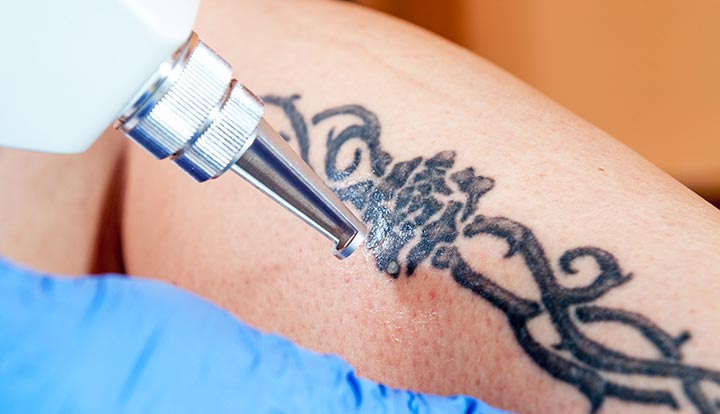
Tattoo Removal Alternatives
2. Saline Tattoo Removal: The Natural Flush
- Process: Saline solution is injected into the tattoo, lifting ink to the surface as scabs form and peel. Similar to tattooing but uses salt water.
- Pros: Affordable, minimal scarring (<5%), natural process, ideal for cosmetic tattoos (e.g., eyebrows).
- Cons: Slow (3-8 sessions), less effective for deep/professional ink, mild stinging.
- Cost & Results: £50-£150 per session (£300-£900 total); 50-80% fading, best for amateur or faded ink (Source: Tattoo International, 2024).
- Better Than Laser?: Yes for budget-conscious clients or cosmetic tattoos; no for large, dark tattoos needing full removal.
Client Story: Zara, a London teacher, used saline at our Camden studio for a faded heart tattoo. “Five sessions faded it enough for a cover-up,” she said. “Affordable and safe for my classroom vibe!”
3. Dermabrasion: Sanding Away Ink
- Process: A rotating abrasive tool sands the skin’s top layers, fading ink. Requires local anaesthesia; multiple sessions for deeper ink.
- Pros: Quick (30-60 minutes), affordable, can smooth skin texture.
- Cons: High scarring risk (20-50%), bleeding, not for dark skin (hyperpigmentation risk), outdated (Source: FDA, 2025).
- Cost & Results: £150-£500 per session (1-3 sessions); 50-70% fading, best for superficial tattoos.
- Better Than Laser?: No—higher risks and less effective; only for small, light tattoos if laser isn’t an option.
4. Chemical Peels/TCA: Exfoliating Ink
- Process: Trichloroacetic acid (TCA) or similar peels exfoliate skin layers, fading ink over time. Applied in controlled sessions.
- Pros: Non-invasive, improves skin texture, affordable.
- Cons: Pigmentation changes (10-20%), irritation, ineffective for deep ink (Source: Journal of Clinical Dermatology, 2025).
- Cost & Results: £100-£300 per session (4-6 sessions); 40-60% fading for light tattoos.
- Better Than Laser?: No—less effective and riskier for deep tattoos; suitable for faded ink or skin rejuvenation.
5. Cryotherapy: Freezing the Ink
- Process: Liquid nitrogen freezes the tattooed area, causing ink to break down as skin heals. Less common in 2025.
- Pros: Quick, low cost, simple procedure.
- Cons: Blistering, hypopigmentation (10-15%), inconsistent results (Source: PubMed, 2022).
- Cost & Results: £100-£250 per session (2-4 sessions); 50-70% fading for small, dark tattoos.
- Better Than Laser?: No—unreliable and riskier; only for small tattoos if laser is unavailable.
6. Radiofrequency/Infrared: Emerging Heat-Based Option
- Process: Heat energy targets ink, breaking it down for immune clearance. Still experimental in 2025.
- Pros: Non-laser, may tighten skin, less painful than laser.
- Cons: Limited data, burn risks, not widely available (Source: Tattoo Technology Review, 2025).
- Cost & Results: £200-£400 per session (3-6 sessions); 50-70% fading, unproven long-term.
- Better Than Laser?: No—too new and untested; laser remains superior.
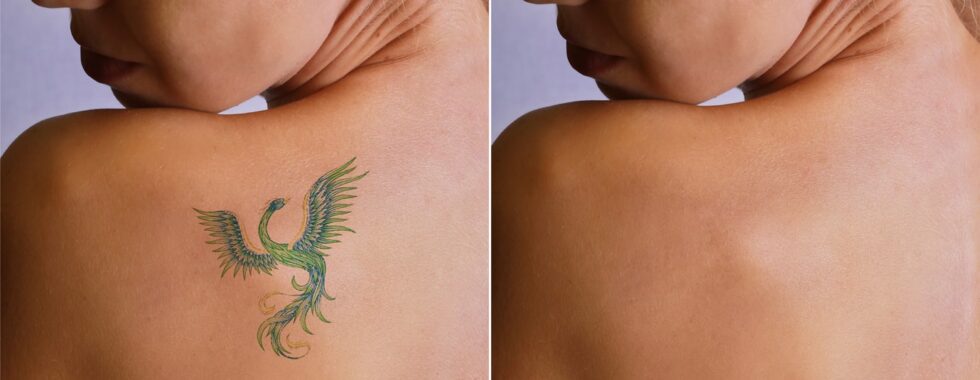
Tattoo Removal Alternatives
Why Laser Often Wins in 2025
Laser removal, especially picosecond lasers (PicoSure Pro, Picoway), dominates due to:
- Precision: Targets ink without harming skin (1-5% scarring vs. 10-50% for excision/dermabrasion).
- Versatility: Works on all skin types and most colours (black: 6-10 sessions; colours: 10-15).
- Safety: FDA-approved, with low infection risk (<1%) when done professionally (Source: FDA, 2025).
- Advancements: 2025 Pico lasers reduce sessions by 20-30% compared to older Q-switched lasers (Source: British Journal of Dermatology, 2025).
PinkTatPier Client Story: Noah, a London DJ, tried saline but switched to laser at our Camden studio. “Saline was slow; PicoSure cleared my tattoo in 8 sessions,” he said. “Perfect for my gigs!”
When to Choose Alternatives Over Laser
- Surgical Excision: Best for tiny tattoos (<5 cm) where complete removal is needed fast (e.g., medical reasons).
- Saline Removal: Ideal for cosmetic tattoos (eyebrows, lips) or budget-conscious clients seeking fading for cover-ups.
- Dermabrasion/Chemical Peels: Only for superficial, faded tattoos; outdated for most cases.
- Cryotherapy/Radiofrequency: Experimental; consider only if laser isn’t accessible and risks are acceptable.
Expert Quote: “Lasers lead, but alternatives like saline suit specific needs,” says Finn, a PinkTatPier artist with 11 years of experience. “We guide London clients to the safest choice.”
Risks and Considerations
All methods carry risks:
- Laser: Redness, blistering (1-7 days), rare pigmentation changes (5-10% in darker skin).
- Excision: Scarring (10-50%), infection (5-10%).
- Saline: Mild stinging, incomplete fading.
- Dermabrasion/Peels: Scarring (10-50%), hyperpigmentation (10-20%).
- Cryotherapy: Blistering, hypopigmentation (10-15%).
Always consult a professional. PinkTatPier offers free consultations to assess tattoo size, skin type, and removal goals (Source: Cleveland Clinic, 2025).
PinkTatPier’s Approach to Removal Options
PinkTatPier’s Shoreditch and Camden studios offer:
- Laser Removal: PicoSure Pro and Picoway for 70-95% clearance (£80-£300/session).
- Saline Removal: For cosmetic/amateur tattoos (£50-£150/session).
- Referrals: For excision or peels, we connect clients to trusted London dermatologists.
- Aftercare: Free kits with London-exclusive balms and SPF 50+ for humid climates.
Client Story: Sophie, a London stylist, used laser at our Shoreditch studio after trying peels elsewhere. “Peels didn’t work; PicoSure faded my tattoo in 9 sessions,” she said. “Ready for fashion events!”
Aftercare for Non-Laser Methods
- Excision: Keep stitches clean, avoid stretching skin (2 weeks).
- Saline: Moisturise scabs, avoid picking (1-2 weeks).
- Dermabrasion/Peels: SPF 50+, hydrate skin, avoid sun (2-4 weeks).
- Cryotherapy: Treat blisters with antibiotic ointment, protect from sun.
PinkTatPier’s aftercare kits ensure safe healing for all methods.
Myths About Tattoo Removal Alternatives
- Myth: “Non-laser methods are always safer.”
- Truth: Excision and dermabrasion have higher scarring risks (10-50%) than laser (1-5%) (Source: FDA, 2025).
- Myth: “Saline removes all tattoos completely.”
- Truth: Best for fading (50-80%); deep ink needs laser (Source: Tattoo International, 2024).
- Myth: “Natural remedies (e.g., lemon, salt) work.”
- Truth: Ineffective, cause burns/scarring (Source: Journal of Clinical Dermatology, 2025).
- Myth: “Excision works for all tattoos.”
- Truth: Only small tattoos; large areas risk disfigurement (Source: Cleveland Clinic, 2025).
- Myth: “Alternatives are faster than laser.”
- Truth: Most need multiple sessions; excision is one-time but scars (Source: British Journal of Dermatology, 2025).
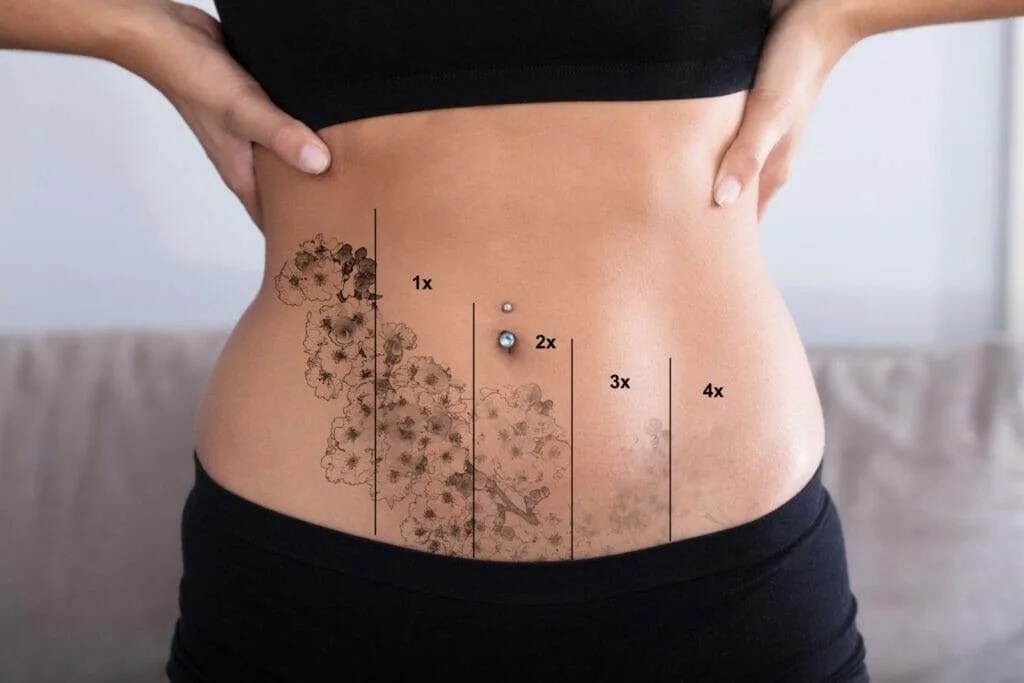
Tattoo Removal Alternatives
When to Seek Professional Help in London
If you experience complications (e.g., infection, scarring):
- PinkTatPier: Free consultations for laser/saline issues; referrals for excision.
- Dermatologists: For persistent pigmentation or infections.
- London Clinics: Contact trusted providers like Este Medical Group.
Client Story: Ravi, a London chef, had saline irritation. “PinkTatPier’s aftercare balm fixed it,” he said. “My skin’s clear for kitchen work!”
FAQ: Your Questions About Tattoo Removal Alternatives
What are the alternatives to laser tattoo removal?
Surgical excision, saline, dermabrasion, chemical peels, cryotherapy. Each varies in cost, effectiveness, and scarring (Source: British Journal of Dermatology, 2025).
Is saline tattoo removal better than laser?
Saline is cheaper (£50-£150/session) and natural but slower (3-8 sessions, 50-80% fading). Best for cosmetic tattoos (Source: Tattoo International, 2024).
How much do non-laser methods cost in the UK?
Excision: £200-£1,000; saline: £300-£900; dermabrasion/peels: £100-£500/session (Source: Este Medical Group, 2025).
Do non-laser methods scar more than laser?
Yes—excision (10-50%), dermabrasion (20-50%) vs. laser (1-5%) (Source: FDA, 2025).
Can I remove a tattoo at home?
No—home remedies (lemon, salt) cause burns/scarring; always see a professional (Source: Journal of Clinical Dermatology, 2025).
What does PinkTatPier recommend?
Laser for most tattoos; saline for cosmetic ink. Free consultations guide you (Source: PinkTatPier expertise, 2025).
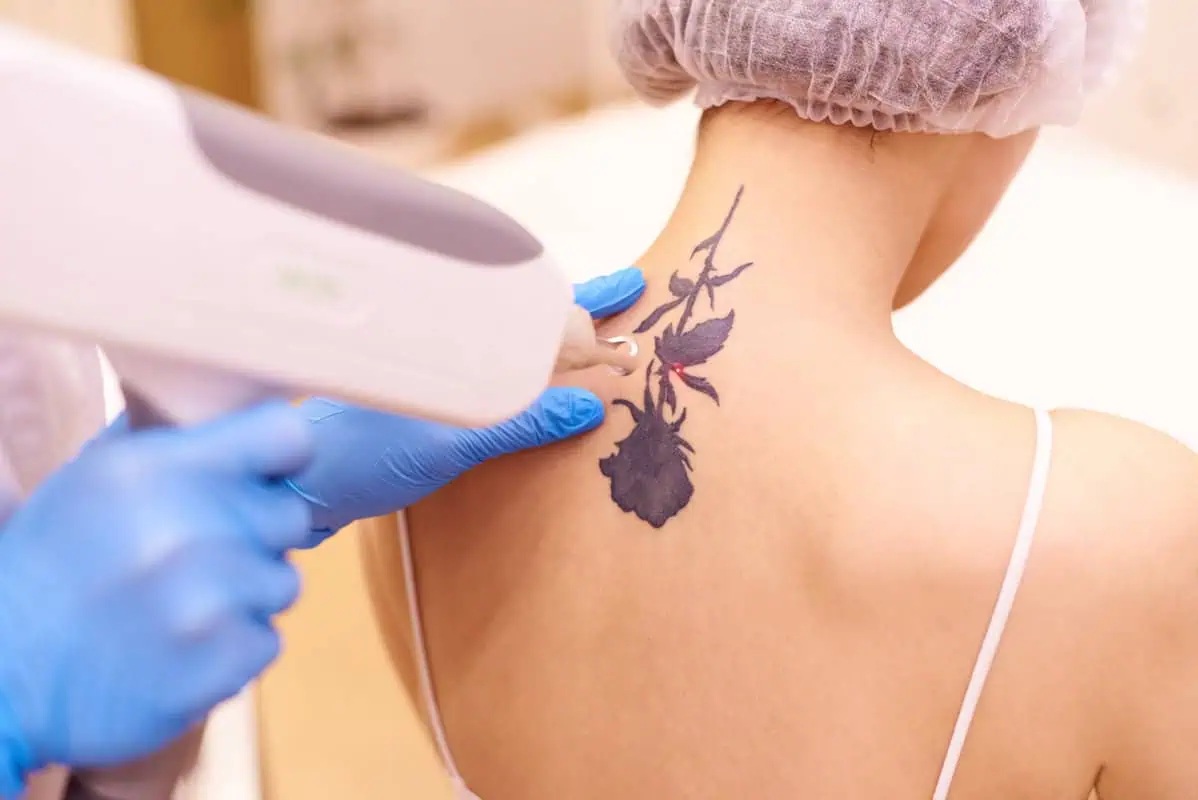
Tattoo Removal Alternatives
Conclusion
While laser remains the top choice for tattoo removal alternatives, methods like surgical excision, saline, dermabrasion, and peels offer options for specific needs. PinkTatPier’s Shoreditch and Camden studios, voted London’s Best Tattoo Shop in 2024, provide PicoSure laser and saline removal, plus referrals for excision. Our free aftercare kits ensure safe healing in London’s humid climate. Ready to erase your ink? Visit pinktatpier.com or follow @PinkTatPier on Instagram to book your London consultation today!
Sources:
- British Journal of Dermatology, 2025
- FDA Tattoo Removal Options, 2025
- Tattoo International, 2024
- Cleveland Clinic, 2025
- Journal of Clinical Dermatology, 2025
- PubMed Non-Laser Methods, 2022
- Tattoo Technology Review, 2025
- Este Medical Group, 2025
